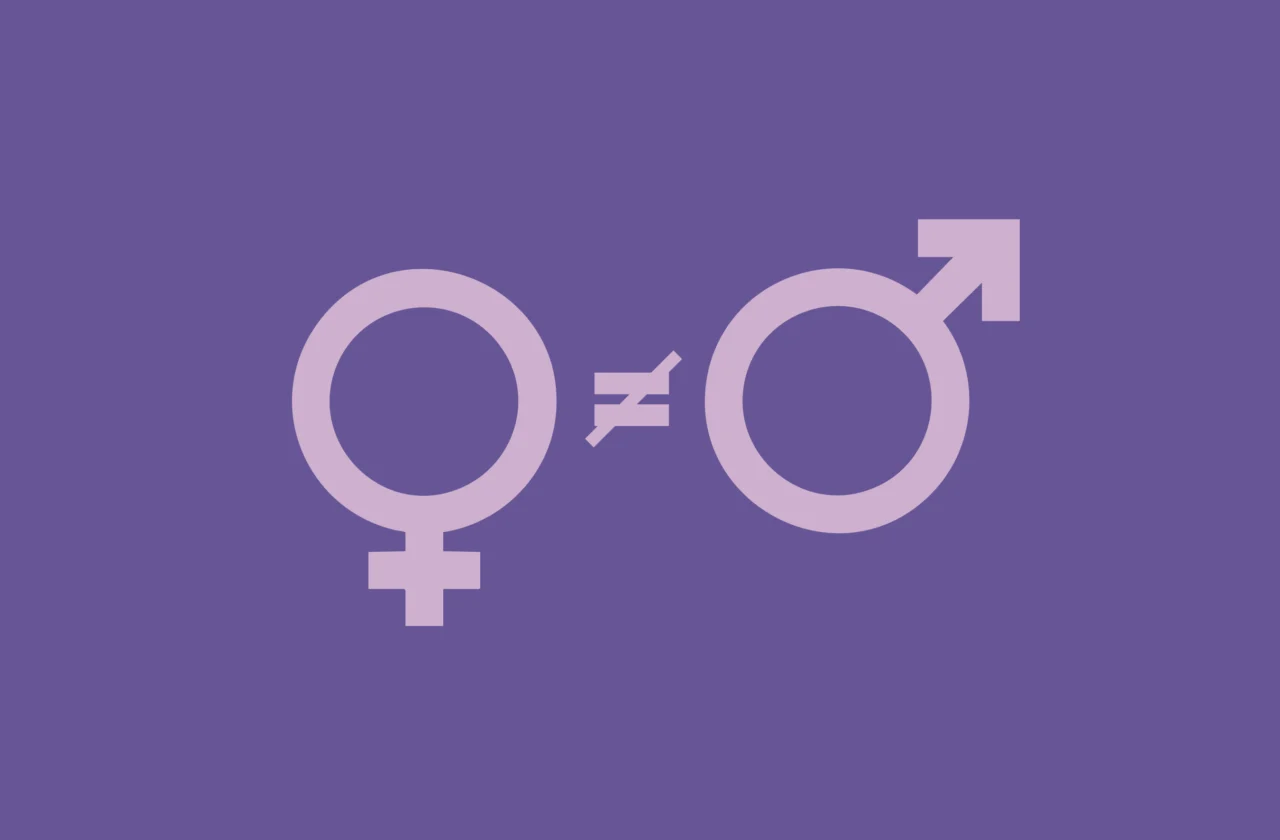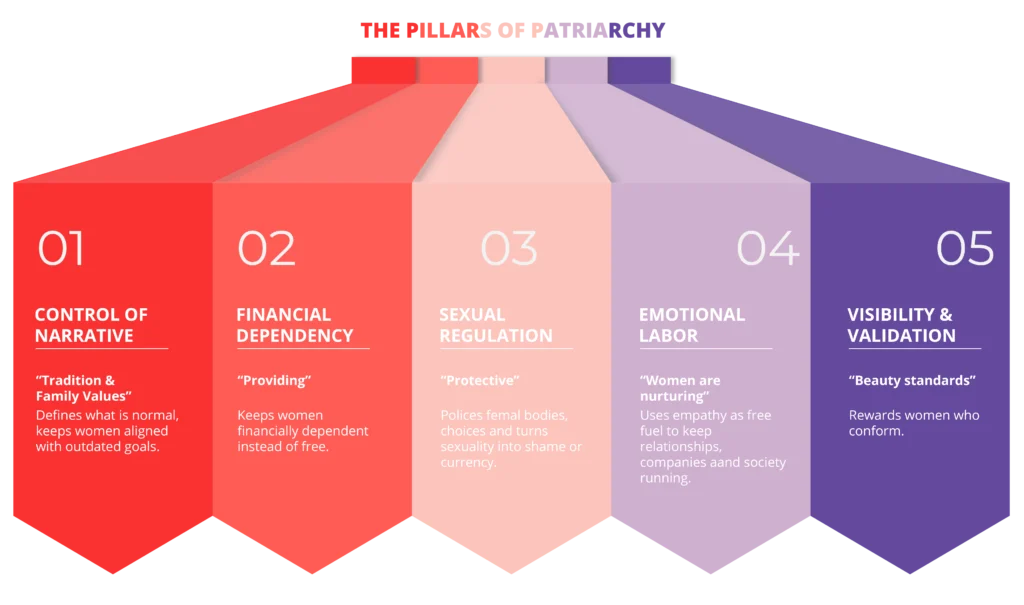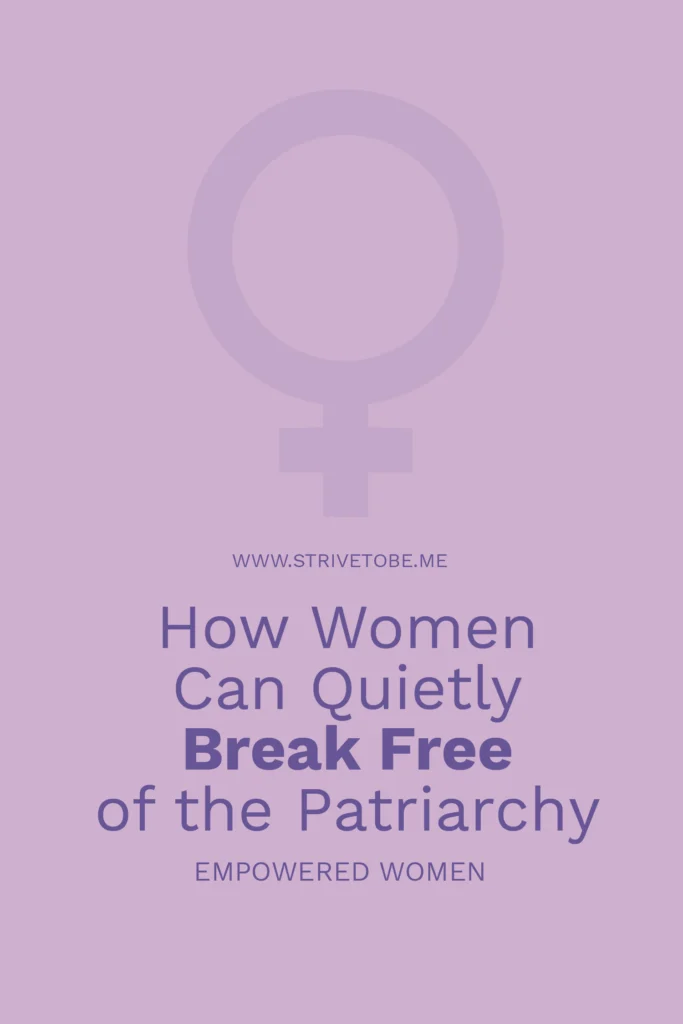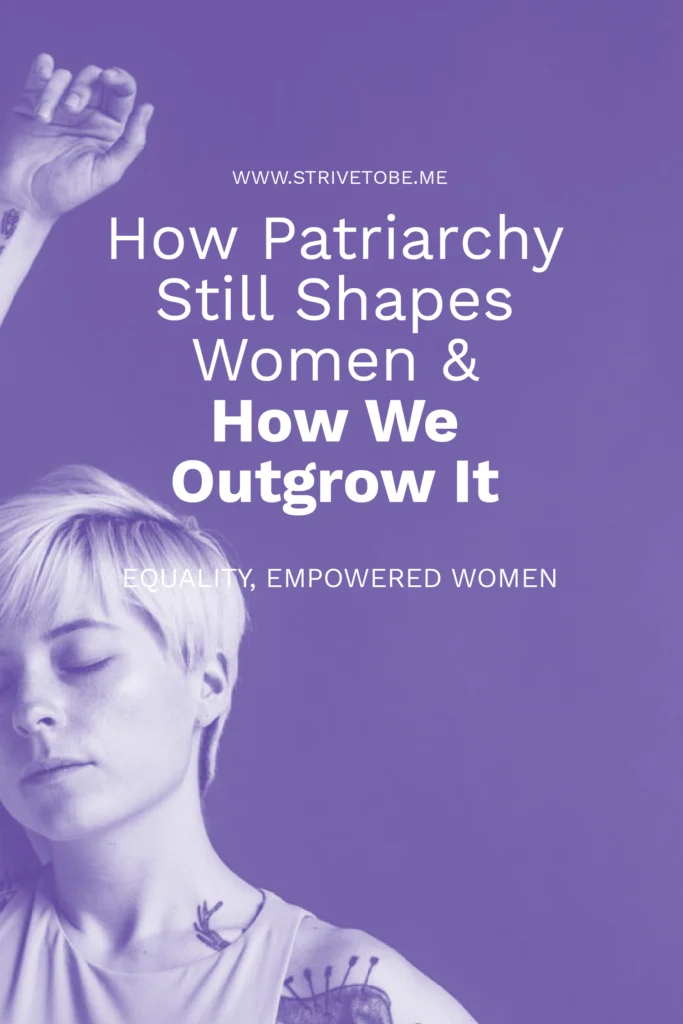How Patriarchy still Shapes Women & How we Can Redesign It

Patriarchy isn’t gone, it evolved.
For centuries, we’ve lived inside a structure so invisible that most people mistake it for nature. It’s called patriarchy, an ancient operating system that has shaped the rules of love, work, ambition, and worth. It doesn’t live in men alone, nor does it need weapons to survive. Today patriarchy still shapes women – It exists in habits, in language, in the quiet expectations that define who gets to lead, who gets to rest, and who is supposed to say thank you for less.
Patriarchy is not a conspiracy. It’s a design: elegant, enduring, and built for efficiency at the expense of equality. But like any outdated system, it’s showing cracks. And women, especially now, have the tools to rewrite its code — not with rage, but with strategy.
This isn’t about overthrowing men. It’s about reprogramming the assumptions that made control seem like protection and obedience look like grace.
Origins of Patriarchy
To change something, we have to understand what it was built for. Patriarchy didn’t appear out of nowhere — it evolved when ownership replaced community.
When humans began settling, wealth, land, and lineage became central to survival. The simplest way to preserve property was to control women — their labor, bodies, and offspring. Over time, this control was sanctified by religion, normalized by culture, and written into law.
The pattern was brilliant in its simplicity: make male authority look moral, and make female submission look natural.
From there, patriarchy did what all good systems do — it adapted. It moved into institutions, art, education, and family structures. It didn’t need to shout; it just needed to define normal.
Today, it still runs quietly beneath the interface of modern life. You can feel it every time a woman’s ambition is labeled “aggressive,” when caregiving is unpaid but essential, when men are told to lead but never to cry. It’s not that people consciously enforce these things — it’s that we’ve mistaken them for logic.
The Pillars Holding It Up
Like any architecture, patriarchy rests on pillars — five elegant structures disguised as virtues. They are what make inequality feel comfortable.

| Pillar | Disguise | Real Impact |
|---|---|---|
| Control of narrative | “Tradition,” “family values” | Defines what is normal and what is deviant. Keeps women aligned with outdated ideals. |
| Economic dependency | “Providing for women” | Keeps women financially grateful instead of financially free. |
| Sexual regulation | “Protecting virtue” | Polices female bodies and choices, turning sexuality into shame or currency. |
| Emotional labor | “Women are nurturing” | Uses empathy as free fuel to keep families, relationships, companies & societies running. |
| Visibility and validation | “Humility,” “beauty standards” | Rewards women who conform and silences those who disrupt. |
Each pillar looks harmless — even noble. That’s how it survives.
The brilliance of patriarchy is that it never needs to say “obey.” It only needs to whisper “be good.”
A secret software update
Fighting patriarchy head-on often fails because resistance is built into its logic — if you fight, you’re labeled difficult; if you comply, you disappear. The smarter way is subversive: redesign the system from the inside out.
Think of it as a software update. Quiet. Seamless. Irreversible.
1. Rebrand power as care
Women have often rejected power because it looked like domination. But real power is the ability to protect, to shape outcomes, to nurture at scale. When women lead, economies improve, communities heal, and empathy becomes infrastructure.
We need to redefine leadership not as ego but as applied empathy. Power, when rooted in care, stops being masculine, it becomes human.
2. Normalize female self-interest
A woman choosing herself, her rest, her pleasure, her ambition, is not selfish; she’s simply breaking a centuries-old trance. Every time a woman says, “No, that doesn’t work for me,” the system loses a pixel of control. Self-interest is the quietest form of revolution.
3. Make wealth and autonomy aesthetic
Money has long been framed as masculine, but there’s nothing more beautiful than a woman in full control of her life. Let’s make financial literacy, ownership, and independence visually desirable. Show it in design, language, and lifestyle — not as rebellion, but as refinement.
4. Build micro-sisterhoods
Forget grand movements, start small, loyal, purpose-driven female networks — women who share knowledge, strategies, and opportunities. Movements built on friendship are harder to dismantle.
Change doesn’t always roar. Sometimes it whispers in private chats and dinner tables.
5. Use language as subversion
Words shape self-perception. Swap helping for building, asking for claiming, lucky for deserving. Language isn’t decoration, it’s architecture. When women change vocabulary, they change belief systems.
6. Stop apologizing
Women have been conditioned to soften impact — to add disclaimers, smile through discomfort, and make others feel safe. Stop. Confidence isn’t arrogance; it’s energy efficiency. Every unnecessary apology drains power from the system’s opposition — you.
The Strategy
Let’s be honest: Patriarchy still shapes women today! We see the problem, but we often feel tired of the fight. The message must be sold not as rebellion, but as evolution — something graceful, desirable, and intelligent.
The strategy: make empowerment feel like luxury, not labor.
- Use the language of design and psychology.
Don’t say “break the system.” Say “recode your life.”
Position equality as innovation — the next version of human intelligence. - Appeal to aspiration, not anger.
Anger wakes us up, but aspiration sustains us. Frame empowerment as elegance — the art of living by one’s own standards. - Emphasize relief, not struggle.
Patriarchy thrives on exhaustion. Sell the feeling of exhale — the peace that comes when women stop asking for permission. - Anchor everything in self-worth.
“You deserve more because you are already enough.” That’s not a slogan. It’s the antidote to centuries of scarcity psychology.
When women feel that equality enhances their serenity and self-trust, they won’t need to be convinced — they’ll self-activate.
Turning Power into Purpose
aka. Selling Change to Men
Here’s the paradox: men hold most of the institutional power, yet many feel powerless in their own emotional lives. The way to bring men into the redesign is not through guilt — it’s through vision.
Patriarchy hasn’t only limited women; it has trapped men inside the performance of strength. They’ve been raised to provide, not to feel; to compete, not to connect. Equality, reframed correctly, becomes their liberation too.
“What if your generation were known as the one that redefined power itself?”
The strategy: redefine power so that men don’t lose it — they evolve it.
- 1. Sell emotional intelligence as high performance.
Men understand skill acquisition. Frame empathy, reflection, and partnership as advanced leadership abilities. The world’s best founders, CEOs, and creatives are already mastering them — not as morality, but as mastery.
- 2. Appeal to legacy, not guilt.
Men resist accusation but respond to purpose. The question isn’t, “What did you do wrong?” but “What could you build next?” Equality offers them the chance to be remembered not as defenders of the old world, but as designers of the new.
- 3. Make equality feel like status, not sacrifice.
Modern masculinity can be rebranded as inclusivity — intelligent, self-aware, magnetic. Being the kind of man who listens, co-creates, and uplifts should feel aspirational.
- 4. Use male discomfort as entry point.
Many men are silently struggling — with burnout, pressure, loneliness. When they realize patriarchy restricts them too, the conversation shifts from confrontation to collaboration.
Equality isn’t a threat to their freedom — it’s a release from their cage.
- 5. Design shared language.
Words matter here too. Replace losing privilege with gaining partnership. Don’t say “make space for women” — say “make space for brilliance.” Both genders deserve to inhabit power comfortably.
- 6. Show economic and relational benefit.
Equality pays dividends. Diverse teams outperform homogeneous ones. Balanced relationships last longer. The numbers make the case, but the emotional payoff seals it: peace, connection, creativity.
“Equality isn’t a moral choice — it’s a productivity upgrade.”
When men start to feel that gender balance gives them better relationships, better work, and a deeper sense of purpose, they’ll defend it themselves.
The System Upgrade:
From Control to Collaboration
Patriarchy was built for survival; equality is built for evolution. The future isn’t about reversing dominance — it’s about redistributing possibility.
What we’re really doing is updating humanity’s design language.
When women start valuing self-interest as sacred, when men start valuing empathy as strength, the old code stops running. It’s not a war; it’s a quiet migration toward a new version of civilization.
One in which:
- Love is partnership, not possession.
- Power is stewardship, not control.
- Success is measured in collective well-being, not individual conquest.
The Quiet Revolution
True revolutions rarely look like revolts. They look like women making choices without permission. Men listening without defensiveness. Companies rewriting policies because it’s good design, not charity.
It happens in silence, in moments that don’t trend:
- A woman asking for what she’s worth without guilt.
- A father teaching his son to cry.
- A CEO realizing his best innovation was empathy.
That’s how systems change — not in chaos, but in calibration. We can stop patriarchy shaping women the way they want it. Use these 10 actions to quietly influence the future.
“Patriarchy doesn’t end with protests. It ends when women stop apologizing and men start listening. When both choose to build rather than defend.”
The architecture of power is being redrawn — by designers, thinkers, mothers, lovers, and quiet revolutionaries.
It’s not about taking something away from men; it’s about giving humanity back to everyone.
And when that happens, when we finally see each other not as roles but as co-creators, we’ll realize something extraordinary: Patriarchy didn’t collapse. It simply became obsolete.


You might also like:
10 Female Actions to Fight Patriarchy
Female Exhaustion: How Patriarchy Profits from Your Fatigue





